Showing Spotlights 1865 - 1872 of 2854 in category All (newest first):
 A new 290-page tome titled 'Strategic impact, no revolution' is the result of a year-long effort to study the strategic value and impact of NMP in its wider European and international context, with special focus on the ERA dimension, against the general policy objectives of FP6 and against the specific objectives of NMP. The title of this report refers to the general finding that the third thematic priority in FP6 strategically affected Europe's competitive position and was an important programme which also influenced Member States' policies and research agendas. However, it cannot be directly linked to a revolution with regard to creating substantial scientific or industrial breakthroughs although these were among the explicitly targeted objectives. The program strengthened Europe's position as one of the world leaders in the respective scientific and industrial fields, but did not enable Europe to outperform other key actors such as the United States or Japan.
A new 290-page tome titled 'Strategic impact, no revolution' is the result of a year-long effort to study the strategic value and impact of NMP in its wider European and international context, with special focus on the ERA dimension, against the general policy objectives of FP6 and against the specific objectives of NMP. The title of this report refers to the general finding that the third thematic priority in FP6 strategically affected Europe's competitive position and was an important programme which also influenced Member States' policies and research agendas. However, it cannot be directly linked to a revolution with regard to creating substantial scientific or industrial breakthroughs although these were among the explicitly targeted objectives. The program strengthened Europe's position as one of the world leaders in the respective scientific and industrial fields, but did not enable Europe to outperform other key actors such as the United States or Japan.
Aug 12th, 2010
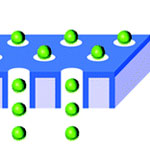 Delivering healthy proteins directly into human cells to replace malfunctioning proteins is considered one of the most direct and safe approaches for treating diseases. Controlled and long-term protein drug delivery has also been considered as one of the most promising biomedical applications of nanotechnology. So far, though, the effectiveness of protein therapy has been limited by low delivery efficiency and the poor stability of proteins, which are frequently broken down and digested by cells' protease enzymes before they reach their intended target. This not only makes the drugs ineffective, it can also cause unpredictable side effects such as inflammation, toxicity, and immune responses. The best way for the delivery of protein drugs without denaturation might be possible by exploiting the passive diffusion through a membrane without physical and chemical stresses. This can be achieved when pore sizes in a membrane are controlled to satisfy the single-file diffusion condition of protein drugs.
Delivering healthy proteins directly into human cells to replace malfunctioning proteins is considered one of the most direct and safe approaches for treating diseases. Controlled and long-term protein drug delivery has also been considered as one of the most promising biomedical applications of nanotechnology. So far, though, the effectiveness of protein therapy has been limited by low delivery efficiency and the poor stability of proteins, which are frequently broken down and digested by cells' protease enzymes before they reach their intended target. This not only makes the drugs ineffective, it can also cause unpredictable side effects such as inflammation, toxicity, and immune responses. The best way for the delivery of protein drugs without denaturation might be possible by exploiting the passive diffusion through a membrane without physical and chemical stresses. This can be achieved when pore sizes in a membrane are controlled to satisfy the single-file diffusion condition of protein drugs.
Aug 10th, 2010
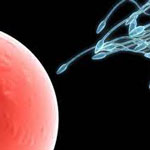 With fully conclusive findings about the toxicity of carbon nanotubes (CNTs) still up in the air, research on biomedical applications of CNTs is pushing full steam ahead. Adding to the list of potential concerns, a recent nanotoxicology study by a U.S.-Chinese research team looked into the impact of carbon nanotubes on male reproductive health. The translocation and biodistribution of nanoparticles are key factors in their toxicity evaluation in vivo. Although other nanoparticles such as gold and magnetic nanoparticles have been reported to enter testes in small quantities, it had not been established whether CNTs could enter or accumulate in the testis. This pilot study investigated the effects of intravenous injection of single and multiple doses of water-soluble multiwalled carbon nanotubes on the reproductive systems of male mice.
With fully conclusive findings about the toxicity of carbon nanotubes (CNTs) still up in the air, research on biomedical applications of CNTs is pushing full steam ahead. Adding to the list of potential concerns, a recent nanotoxicology study by a U.S.-Chinese research team looked into the impact of carbon nanotubes on male reproductive health. The translocation and biodistribution of nanoparticles are key factors in their toxicity evaluation in vivo. Although other nanoparticles such as gold and magnetic nanoparticles have been reported to enter testes in small quantities, it had not been established whether CNTs could enter or accumulate in the testis. This pilot study investigated the effects of intravenous injection of single and multiple doses of water-soluble multiwalled carbon nanotubes on the reproductive systems of male mice.
Aug 9th, 2010
 Bullet-proof vests are basically made from high stiffness and toughness, woven or laminated, polymeric fibers stacked in a number of layers. Upon impact of the striking bullet, the fabric material absorbs the energy by stretching of the fibers and the stiff fibers ensure that the load is dispersed over a large area throughout the material. Carbon nanotube is an ideal candidate material for bulletproof vests due to its unique combination of exceptionally high elastic modulus and high yield strain. If one compares these values with those for other fibers suitable for ballistic applications, the enormous potential of CNTs as a candidate material for bullet-proof armor system is quite evident.
Bullet-proof vests are basically made from high stiffness and toughness, woven or laminated, polymeric fibers stacked in a number of layers. Upon impact of the striking bullet, the fabric material absorbs the energy by stretching of the fibers and the stiff fibers ensure that the load is dispersed over a large area throughout the material. Carbon nanotube is an ideal candidate material for bulletproof vests due to its unique combination of exceptionally high elastic modulus and high yield strain. If one compares these values with those for other fibers suitable for ballistic applications, the enormous potential of CNTs as a candidate material for bullet-proof armor system is quite evident.
Aug 6th, 2010
 Solar cells that convert sunlight to electric power traditionally have been dominated by solid state junction devices, often made of silicon wafers. Thanks to nanotechnology, this silicon-based production technology has been challenged by the development of a new generation of solar cells based on thin film materials, nanocrystalline materials and conducting polymeric films. These offer the prospects of cheaper materials, higher efficiency and flexible features. Thanks to a highly efficient polymer solar cell fabrication method by a novel coating process - roller painting - even the mass production of polymer solar cells is now within reach. A particular advantage of roller painting compared to other coating processes is ease of control of the film thickness and uniformity.
Solar cells that convert sunlight to electric power traditionally have been dominated by solid state junction devices, often made of silicon wafers. Thanks to nanotechnology, this silicon-based production technology has been challenged by the development of a new generation of solar cells based on thin film materials, nanocrystalline materials and conducting polymeric films. These offer the prospects of cheaper materials, higher efficiency and flexible features. Thanks to a highly efficient polymer solar cell fabrication method by a novel coating process - roller painting - even the mass production of polymer solar cells is now within reach. A particular advantage of roller painting compared to other coating processes is ease of control of the film thickness and uniformity.
Aug 4th, 2010
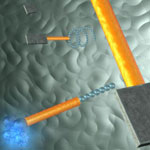 Sophisticated molecular-size motors have evolved in nature, where they are used in virtually every important biological process. Some fascinating examples in nature are DNA and RNA polymerase, rotary motors such as ATP synthase, and flagella motors. In contrast, the development of synthetic nanomotors that mimic the function of these amazing natural systems and could be used in man-made nanodevices is in its infancy. Nevertheless, scientists are making good progress in achieving cargo transport by artificial nanomachines although often these advances are handicapped by several drawbacks. Researchers in Germany have now demonstrated the directed loading and transport of microobjects by high propulsion powered tubular microbots driven by a microbubble propulsion mechanism.
Sophisticated molecular-size motors have evolved in nature, where they are used in virtually every important biological process. Some fascinating examples in nature are DNA and RNA polymerase, rotary motors such as ATP synthase, and flagella motors. In contrast, the development of synthetic nanomotors that mimic the function of these amazing natural systems and could be used in man-made nanodevices is in its infancy. Nevertheless, scientists are making good progress in achieving cargo transport by artificial nanomachines although often these advances are handicapped by several drawbacks. Researchers in Germany have now demonstrated the directed loading and transport of microobjects by high propulsion powered tubular microbots driven by a microbubble propulsion mechanism.
Aug 3rd, 2010
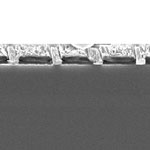 Quantum dots have been receiving extensive attention from researchers because they can be widely used for basic physics study, quantum computing, biological imaging, nanoelectronics, and photonics applications. Current major fabrication methods for semiconductor quantum dots all have certain drawbacks. Comparing all these methods, the electrical depletion method has many advantages, such as electrical tunability by gate contacts, smooth confinement boundaries, good control and uniformity if the top gate patterns are uniform enough. Researchers have now, for the first time, applied the electrical depletion method to quantum wells and generate a large area of uniform quantum dots using a uniform metallic nanoholes array on top of quantum wells. This design for forming quantum dots has inherited all the advantages of the electrical depletion method. Furthermore, it can produce millions of uniform quantum dots easily, precisely, and controllably, which will help realize the wide applications of quantum dots in many areas.
Quantum dots have been receiving extensive attention from researchers because they can be widely used for basic physics study, quantum computing, biological imaging, nanoelectronics, and photonics applications. Current major fabrication methods for semiconductor quantum dots all have certain drawbacks. Comparing all these methods, the electrical depletion method has many advantages, such as electrical tunability by gate contacts, smooth confinement boundaries, good control and uniformity if the top gate patterns are uniform enough. Researchers have now, for the first time, applied the electrical depletion method to quantum wells and generate a large area of uniform quantum dots using a uniform metallic nanoholes array on top of quantum wells. This design for forming quantum dots has inherited all the advantages of the electrical depletion method. Furthermore, it can produce millions of uniform quantum dots easily, precisely, and controllably, which will help realize the wide applications of quantum dots in many areas.
Jul 30th, 2010
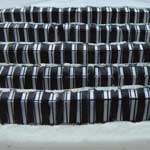 Previous studies have revealed that single-walled carbon nanotubes (SWCNTs) strongly absorb light, especially in the near-infrared region, and convert it into heat. There even has been a report that fluffy SWCNTs can burst into flames when exposed to a camera flash, which means the local temperature has reached 600-700C. This effect has already been used to develop effective CNT-based cancer killers or extremely dark materials. In a new twist, researchers in China have now discovered that SWCNT buckypapers have a large Seebeck coefficient, indicating a strong capability to convert heat into electricity. Based on this, they have designed an opto-electronic power source which converts the incident light into electricity. While this has been discussed as a theoretical mechanism, the team at Tsinghua University in Beijing has actually fabricated an integrated device that outputs a macroscopic voltage, moving forward towards practical applications.
Previous studies have revealed that single-walled carbon nanotubes (SWCNTs) strongly absorb light, especially in the near-infrared region, and convert it into heat. There even has been a report that fluffy SWCNTs can burst into flames when exposed to a camera flash, which means the local temperature has reached 600-700C. This effect has already been used to develop effective CNT-based cancer killers or extremely dark materials. In a new twist, researchers in China have now discovered that SWCNT buckypapers have a large Seebeck coefficient, indicating a strong capability to convert heat into electricity. Based on this, they have designed an opto-electronic power source which converts the incident light into electricity. While this has been discussed as a theoretical mechanism, the team at Tsinghua University in Beijing has actually fabricated an integrated device that outputs a macroscopic voltage, moving forward towards practical applications.
Jul 29th, 2010
 A new 290-page tome titled 'Strategic impact, no revolution' is the result of a year-long effort to study the strategic value and impact of NMP in its wider European and international context, with special focus on the ERA dimension, against the general policy objectives of FP6 and against the specific objectives of NMP. The title of this report refers to the general finding that the third thematic priority in FP6 strategically affected Europe's competitive position and was an important programme which also influenced Member States' policies and research agendas. However, it cannot be directly linked to a revolution with regard to creating substantial scientific or industrial breakthroughs although these were among the explicitly targeted objectives. The program strengthened Europe's position as one of the world leaders in the respective scientific and industrial fields, but did not enable Europe to outperform other key actors such as the United States or Japan.
A new 290-page tome titled 'Strategic impact, no revolution' is the result of a year-long effort to study the strategic value and impact of NMP in its wider European and international context, with special focus on the ERA dimension, against the general policy objectives of FP6 and against the specific objectives of NMP. The title of this report refers to the general finding that the third thematic priority in FP6 strategically affected Europe's competitive position and was an important programme which also influenced Member States' policies and research agendas. However, it cannot be directly linked to a revolution with regard to creating substantial scientific or industrial breakthroughs although these were among the explicitly targeted objectives. The program strengthened Europe's position as one of the world leaders in the respective scientific and industrial fields, but did not enable Europe to outperform other key actors such as the United States or Japan.
 Subscribe to our Nanotechnology Spotlight feed
Subscribe to our Nanotechnology Spotlight feed





